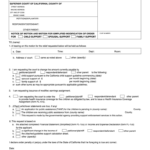

An Exploration into the Complexity of Access Denied: Permissions in the Digital Age
Understanding Permissions and Access Control in the Digital World
One of the fundamental aspects of our digital lifestyle is the concept of permissions and access control. As users, we often face roadblocks such as “Forbidden: You don’t have permission to access this resource,” which not only disrupts our online journey but ignites a curiosity about what is happening behind the scenes of our digital world. In visiting a website, you might have encountered these digital gatekeepers, typically indicating that the website owners have placed some restrictions on the file, page, or resource you are trying to access. This common practice in the realm of information technology has large-scale implications for both end-users and proprietors.
Differentiating Between Public and Private Digital Properties
Every resource on the internet is not a public commodity. The digital world mirrors the physical one in certain ways; just as you cannot enter someone’s private property without permission, digital properties also have boundaries, often guarded by different levels of security measures. These closed doors in the digital sphere can often lead to confusion, sparking debates over issues like intellectual property rights and digital privacy.
The Internet: A Landscape Governed by Permissions
The internet, like any other society, needs a system to govern its operations. Permissions are the cornerstones of this system. Whether it’s a blog post, an image, a database, or a whole website, the owner preserves the right to allow or deny access to these resources. Thus, the familiar interjection, “You don’t have permission to access this resource,” is a cornerstone of the jurisprudence of the internet, likening to the respect of private property in the physical world.
Why Access Might Be Denied: Unpacking the “Forbidden” Tag
The “Forbidden” tag that garners attention every now and then is a simple illustration of an HTTP 403 status code. More often than not, it is a sign of a permissions issue. This tag is a web standard way of informing you that you’ve asked for something that you’re not entitled to. Several factors can trigger the “Forbidden” tag; it could be as simple as a misconfiguration or a sign of more serious security concerns. Delving deeper into these intricacies is essential to grasp why certain resources might be off-limits to you.
The Right to Privacy and Access Permission
The foundation of permissions is deeply rooted in the right to privacy – a right that stretches across both the tangible and digital world. This need for privacy and control is what governs the access controls put in place on websites and other digital resources. By understanding that “Forbidden” does not necessarily denote an illicit attempt to the hidden, but rather a protection of the sensitive, we can foster a more respectful digital environment.
Protection of Intellectual Property and Access Restrictions
The internet is also home to a wealth of intellectual property, and access restrictions serve to protect original work. Whether an artist’s digital gallery or a scholar’s research paper, sometimes the declaration of “Forbidden” serves to uphold the integrity and protect the rights of original content creators in the digital sphere. This conversation invariably circles back to the age-old debate of free information versus copyright protection.
Permission as a Cornerstone of Cybersecurity
In addition to upholding privacy and protecting intellectual property, the concept of permission is key to the field of cybersecurity. Stringent permission protocols can prevent unauthorized access, data breaches, hacker intrusions, and malware attacks. It offers a robust safety net for internet users, institutions, businesses, and governments alike. Without understanding the value and criticality of access controls, we risk underestimating their efficacy in protecting our digital lives.
Parallelism of Legal and Digital Laws: The Road Ahead
The dialogue around access permissions in the digital world is far from over. As technology advances and the digital landscape continues to evolve, so must the laws and performative functions of the World Wide Web. Drawing parallels between legal and digital laws will remain a necessity in the modern age, with the standard response “Forbidden: You don’t have permission to access this resource” serving as an enduring reminder of privacy rights, intellectual property, and cyber security implications.
Originally Post From https://www.crimeonline.com/2024/12/11/judge-rules-cult-mom-lori-vallow-daybell-can-represent-herself-in-arizona-trial/
Read more about this topic at
Error Access Denied
Access Denied? Here’s the Fix…


